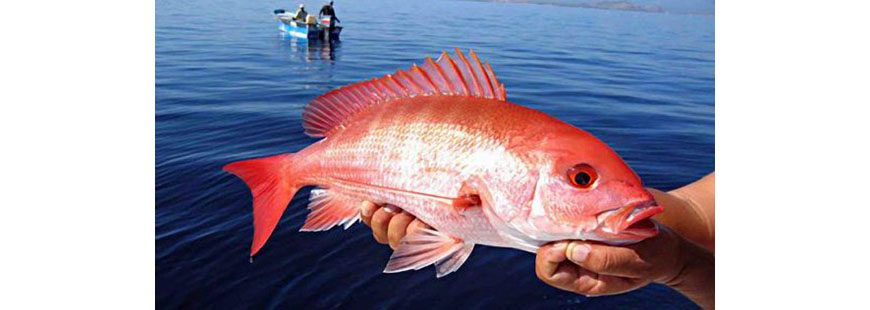Early in 2014, a group of recreational fishing and boating industry organizations, organized under the aegis of the Theodore Roosevelt Conservation Partnership, issued a policy document titled “A Vision for Managing America’s Saltwater Recreational Fisheries” (Vision Statement), which noted that “Spending by saltwater anglers generated more than $70 billion in economic output, supporting more than 450,000 jobs,” but went on to complain that “in the midst of our success in rebuilding marine fisheries and the growth in saltwater recreational fishing, the federal fisheries management system has not adapted to meet the needs of this conservation and economic powerhouse.”
With those words, the organizations that collaborated on the Vision Statement launched an attack on the federal fisheries management system that has continued, unabated, to this day.
The Vision Statement focused on altering the federal fishery management process, seeking to create “a management system that addresses the needs of anglers and industry and produces the full range of economic, social and conservation benefits provided by recreational fishing,” rather than focusing on the health of fish stocks. It opined that “The laws that govern federal marine fisheries are primarily designed for and focused on commercial fishing,” and that “The federal agency tasked with managing marine fisheries has commercial fishing as its primary focus.”
It made the dubious claim that the primary federal fisheries law, the Magnuson-Stevens Fishery Conservation and Management Act (Magnuson-Stevens), “relies on limited entry and catch share programs, along with fixed quotas that can be managed in real time” to manage fisheries, and that those tools, while appropriate for commercial fisheries, should not be used to manage the recreational sector.
As an example of how recreational fisheries should be managed, the Vision Statement noted that “Many state natural resource agencies, especially those in the South, recognize the benefits of a vibrant recreational fishing community and have managed to promote it while conserving their saltwater resources. Striped bass, red drum, black drum, summer flounder, sheepshead, snook, spotted seatrout and tarpon are examples of successfully managed state fisheries that sufficiently meet the needs of recreational anglers while providing extensive economic benefits to their state and national economies.”
It’s probably important to note that, as one of its examples of a “successfully managed” state fishery, the Vision Statement cited the Atlantic striped bass, a fish that is currently overfished, and has been for more than a decade, and which experienced overfishing from about 2003 through 2019 before the states took any meaningful action to address the situation. Yet, during all that time when overfishing occurred, striped bass nonetheless generated more angler trips, and presumably more economic activity, than any other East Coast species. Thus, striped bass provides an interesting insight into what criteria the Vision Statement, and so the recreational industry, uses to determine the “success” of state fishery managers.
The Vision Statement’s emphasis on economic concerns rather than stock health emerged again when it called for “manag[ing] recreational fisheries based on long-term harvest rates, not strictly on poundage-based quotas,” and for eliminating Magnuson-Stevens’ requirement that, whenever possible, overfished stocks must be rebuilt in no more than 10 years, so that “Instead of having a fixed deadline for stocks to be rebuilt…fisheries managers set lower harvest rates that would allow fish stocks to recover gradually while diminishing socioeconomic impacts.”
The recreational industry initially tried to attain their goals through legislation called the Modernizing Recreational Fishery Management Act (Modern Fish Act) which, as originally written, would have weakened the rigorous, science-based management approach required by Magnuson-Stevens. However, by the time the final version of the Modern Fish Act was passed, most of the industry’s proposed changes had been either removed or substantially amended.
At that point, the recreational industry largely abandoned their efforts to amend Magnuson-Stevens, and took up a new approach, arguing that state fisheries managers were more qualified to manage recreational fisheries than their federal counterparts.
Gulf of Mexico red snapper provided the primary impetus for their new effort.
Throughout the 2000s and early 2010s, anglers had chronically overfished the red snapper stock, causing the National Marine Fisheries Service (NMFS) to adopt shorter and shorter seasons in an effort to rein in the continuing overages. Anglers weren’t happy with those efforts to end their overfishing, and in 2013 convinced fishery managers in three states, Florida, Louisiana, and Texas, to stop coordinating state fishing seasons with those adopted by NMFS, and instead adopt longer seasons in those states’ waters.
That only ended up hurting the anglers, as NMFS managed all red snapper in the Gulf of Mexico as a single stock, so when recreational landings in state waters increased, the federal red snapper season was shortened to compensate, falling to a mere three days in 2017 (although NMFS later extended the season, knowing that it would lead to overfishing, a move that led to a lawsuit and an out-of-court settlement in which NMFS agreed not to knowingly allow red snapper to be overfished again).
In an effort to end the controversy, the Gulf of Mexico Fishery Management Council (Gulf Council) adopted Amendment 50 to the Fishery Management Plan for the Reef Fish Resources of the Gulf of Mexico, pursuant to which NMFS would establish annual catch limits and annual catch targets for the recreational fishery as a whole, but would then allocate quotas for each state’s private boat anglers; each state would then be allowed to craft seasons, bag limits and minimum size limits (that must be between 14 and 18 inches) designed to constrain catch to that state quota. For-hire vessels would have a separate quota and be managed solely by NMFS.
Despite the fact that NMFS set the annual catch limit and assigned each state’s quota, and despite the fact that states that didn’t stay within their assigned quotas faced pound-for-pound paybacks of any overage in the following year, spokespeople for various recreational angling organizations declared victory, saying things like, “Today’s passage of Amendment 50 (state management) by the Gulf Council is HUGE news for coastal anglers as it will allow Louisiana and the other Gulf states to manage their own private red snapper anglers.”
And the red snapper furor calmed down for a while, although over the past two years, for-hire vessel operators in the eastern Gulf of Mexico have expressed real concerns that overly-long state seasons have sharply reduced both the size and the number of red snapper, particularly on the more accessible inshore fishing grounds.
But new issues, and new calls for state management of species currently managed by NMFS, are arising in the southeast.
In 2024, recreational fishermen badly overfished greater amberjack in the Gulf of Mexico, at a time when the stock was already considered to be overfished. NMFS determined that anglers landed 218% of their 2024 annual catch limit, and since the management plan calls for overages to be paid back, on a pound-for-pound basis, in the next fishing year, that meant that the 2025 season should never have opened at all.
The Gulf Council acknowledged the consequences of the big 2024 overage, but as the season’s opening day, September 1, 2025, approached, the council noted that it had not received notice of a season closure from NMFS, even though it had sent a letter, unanimously approved by all Gulf Council members, to the agency, requesting clarity on the issue. So, the season opened on the scheduled date, even though, with an adjusted annual catch limit of zero because of the previous year’s overage, overfishing began the second the first greater amberjack was tossed into someone’s cooler.
Pressure from the Gulf Council, and from others concerned with the future of the greater amberjack stock and the greater amberjack fishery, apparently persuaded NMFS to finally close down the fishery on September 27, 2025. However, as was the case with red snapper a few years before, NMFS had no authority to shut down whatever greater amberjack fisheries might exist within state waters, and while most of the states adopted closures that mirrored NMFS’ action, Louisiana did not, but instead kept its season open until October 31, 2025.
In the notice announcing that it would not adopt an early greater amberjack closure, the Louisiana Department of Wildlife and Fisheries opined that, “Prior to state management of Red Snapper, anglers were faced with shortened seasons and reduced access. This untimely closing of federal waters for Greater Amberjack is another prime example of the need for state management using state data programs.”
The same notice stated, “Governor Jeff Landry and Louisiana Department of Wildlife and Fisheries (LDWF) Secretary Tyler Bosworth sent a letter to NOAA Fisheries earlier this month, requesting that management of Greater Amberjack be transferred to the state level…State management of Greater Amberjack would provide more flexibility in setting seasons and regulations, allowing greater ability to tailor state-specific management.”
Just how much “flexibility” was needed to tailor regulations that limit recreational landings to zero was never explained.
Louisiana’s actions were praised by that state’s chapter of the Coastal Conservation Association (CCA Louisiana), an organization that was at the forefront of efforts to turn Gulf red snapper management over to the states. On its Facebook page, CCA Louisiana stated that it
applauds the Louisiana Department of Wildlife and Fisheries and Governor Jeff Landry for their actions and stance on Greater Amberjack.
Our Department of Wildlife and Fisheries is truly one of the best in the country, and they have proven their expertise through their successful management of the Red Snapper fishery.
Unfortunately, NOAA has now closed the commercial harvest of Greater Amberjack and is considering closing the recreational season. This closure threatens our anglers’ access to the fishery for no reason.
It is not difficult to read that message as the first step in an effort to foment a crisis similar to that which occurred when states failed to coordinate their state waters red snapper seasons with those in force in federal waters, in what will become another effort to discredit federal fisheries managers and, this time, limit their ability to effectively manage the greater amberjack stock.
Something similar is happening in the South Atlantic, and it again involves red snapper.
In 2008, South Atlantic red snapper were found to be severely overfished. Spawning stock biomass had fallen to just three percent of its potential, while in 2006, the terminal year of the 2008 stock assessment, fishing mortality was more than twelve times the level associated with a sustainable fishery.
In 2009, NMFS proposed emergency regulations that would shut down both the recreational and commercial fisheries for 180 days, a closure that might be extended for an additional 186 days; NMFS also considered shutting down a large area of the ocean to all bottom fishing in order to prevent large numbers of out-of-season red snapper from being killed as bycatch, most particularly in the recreational fishery, although such closure was never put in place.
Since then, NMFS has partially rebuilt the South Atlantic red snapper stock. It is no longer overfished, although it is not yet completely restored. Overfishing continues despite extremely restrictive recreational fishing seasons which, since 2017, have only lasted between one and nine days, and a very small commercial quota. The main problem is that recreational fishermen are catching and killing large numbers of red snapper while fishing for other species when the red snapper season is closed.
As a result of such continued overfishing, NMFS has been sued on multiple occasions by commercial fishermen seeking to get recreational discards under control, as NMFS is obligated to do pursuant to Magnuson-Stevens. Recognizing that it was at fault, on August 22, 2024, NMFS entered into a settlement agreement with the plaintiffs in one of those actions, Tilman Gray v. Raimondo, in which it agreed, among other things, to “complete and submit to the Office of the Federal Register for publication by June 6, 2025, a final rule implementing a Secretarial Amendment to stop overfishing on the South Atlantic red snapper stock under 16 U.S.C. [section] 1854 (c) & (e).”
NMFS did publish a new rule, Amendment 59 to the Fishery Management Plan for the Snapper-Grouper Fishery (Amendment 59), on the agreed-upon deadline, which revised the specifications of the overfishing limit, acceptable biological catch, and annual catch limit for red snapper, along with the proxy for determining overfishing. But it did not include any measures to reduce red snapper bycatch in the recreational fishery, and thus is unlikely to end overfishing. Thus, it is also unlikely to fulfill the agency’s obligations under the settlement agreement in Tilman Gray.
As a result, NMFS was sued once again, with the plaintiffs in the new action, Slash Creek Waterworks v. Lutnick, challenging Amendment 59 on grounds which included the allegation that it did nothing to end the problem of dead recreational discards leading to overfishing.
Faced with extremely short seasons and unwilling to take responsibility for their own sector’s overfishing, recreational organizations in the South Atlantic are now falling back on a tactic that they used successfully in the Gulf of Mexico, and calling for the states to take over management of the red snapper fishery. As in the Gulf, they are successfully convincing state leaders to support such a change.
Congressmen John H. Rutherford (R-FL), Buddy Carter (R-GA), Russell Fry (R-SC), and David Rouzer (R-NC) have formed something they call the “House South Atlantic Red Snapper Task Force (Task Force).” In announcing the Task Force’s formation, Rep. Fry said, “This task force will focus on enhancing data collection, expanding state authority, and ensuring more predictable and longer seasons that benefit anglers and local businesses alike. It’s time we bring local expertise and common sense back to the forefront of fisheries.”
Fisheries managers in North Carolina, South Carolina, Georgia, and Florida subsequently provided the Task Force with a so-called “Action Plan” that would radically alter South Atlantic red snapper management.
Following the blueprint used in the Gulf red snapper fishery, the Action Plan calls for NMFS to issue exempted fishing permits to each state, to allow the states to conduct data-gathering programs that will pave the way for the South Atlantic Fishery Management Council to set the annual catch limit and, presumably, individual state quotas, while allowing the states to determine the recreational bag limits and seasons, and gauge landings through their own data collection programs.
On November 10, 2025, Florida Governor Ron DeSantis declared that his state had submitted its application for an exempted fishing permit, saying, “I was proud to announce that Florida anglers will soon be able to enjoy more Atlantic Red Snapper fishing…The Trump Administration has taken action to rein in the bureaucracy and return the power to the states, where it belongs…Just as it has on the Gulf coast, Florida’s management of Atlantic Red Snapper fishing will boost local economies along our Atlantic coast, supporting our tackle and bait shops, hotels, restaurants, and the entire recreational fishing community.”
Not surprisingly, the various recreational fishing industry organizations enthusiastically supported both the Task Force and the Action Plan. Jeff Angers, president of the Center for Sportfishing Policy, gushed, “State management of South Atlantic red snapper is the right idea at the right time. We’ve seen in the Gulf of America that when states lead with sound science and local common sense, everyone wins—anglers get more days on the water, conservation outcomes improve, and coastal economies thrive. The leadership shown by Florida, Georgia, South Carolina and North Carolina offers real hope that the broken federal system will finally give way to a management model that reflects the reality on the water.”
However, federal red snapper management may soon run into a very large roadblock that does not exist in the Gulf.
In the Gulf of Mexico, most red snapper fishing mortality is caused by commercial and recreational landings, while in the South Atlantic, it is caused by recreational discard mortality, and that discard mortality won’t go away just because the states and their anglers would like it to. NMFS is still responsible for managing red snapper in federal waters, and Magnuson-Stevens still governs NMFS’ actions. It is NMFS that will set the overall recreational catch limit in the South Atlantic, as it does in the Gulf, even if the Action Plan is ultimately enacted.
And in setting the recreational catch limit, dead discards will still have to be considered in order to prevent overall fishing mortality from exceeding the overfishing limit. The states may try to adopt data collection programs that underestimate discard mortality, but absent a significant closed season that lets managers get recreational discard mortality under control, NMFS’ management of South Atlantic red snapper is likely to face continued legal challenges, and those challenges will have a very good chance to succeed.
As the process drags on, we can expect the recreational fishing industry’s assault on federal fisheries managers to continue, as the industry and “angler’s rights” groups work together to sell more fishing tackle and put more fish in anglers’ coolers, regardless of the harm that might cause to the nation’s fish stocks.


